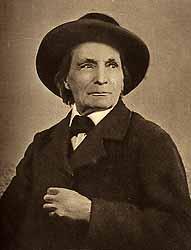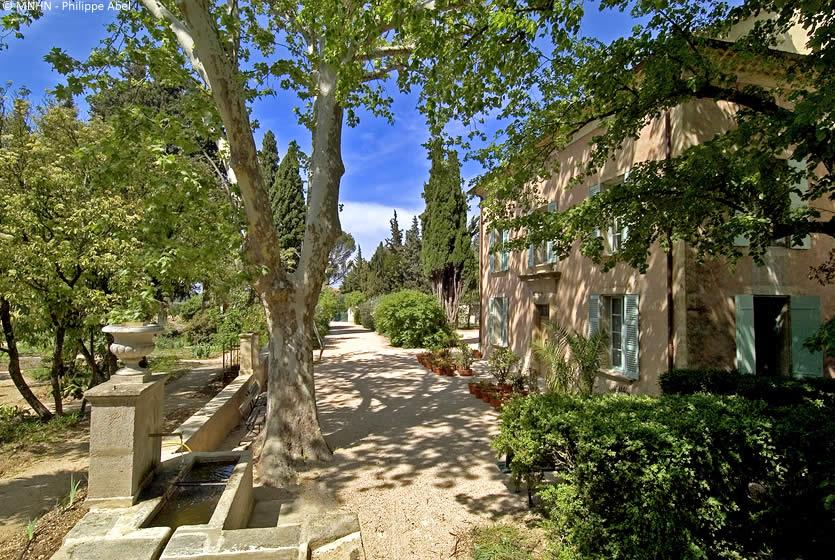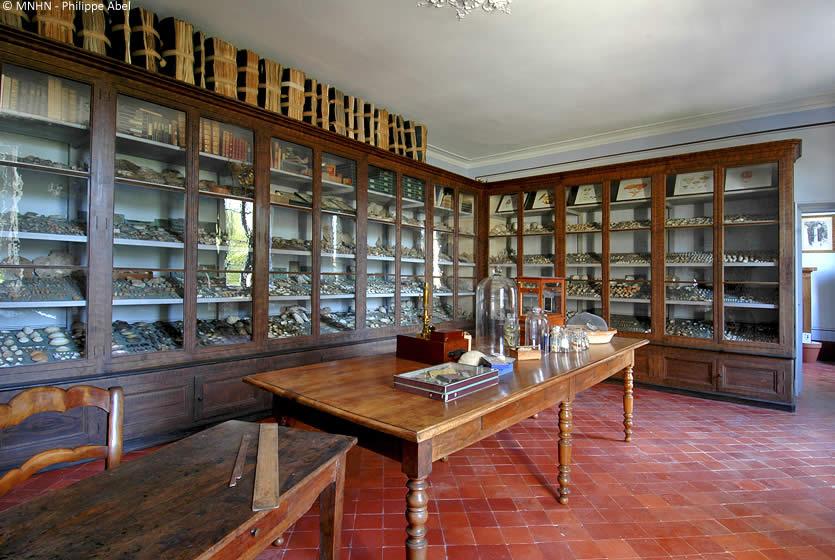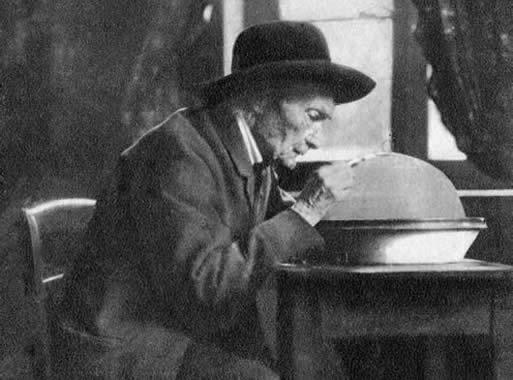

Jean-Henri Casimir FABRE, was born in Aveyron at Saintleons near MILLAU, on December 22, 1823.
At the age of 19, he obtained a teaching position in Carpentras then, in 1849, the chair of physics in the school of Ajaccio. Corsica offered a new horizon of discovery and research which complemented the observations that he had made at the Mont Ventoux.
He spent so much time exploring the coast that he contracted fevers. Just as he found it necessary to return to the continent, he was nominated to the high school of Avignon, in January 1853.
Little by little, the pleasure of observing and studying nature became a real passion. He wrote the famous memoire which would reveal him to the scientific world. The city offered him the position of curator of the musee REQUIEN, and soon afterward supervisor of the municipal schools. Victor DURUY, concerned with the education of the people, created evening classes for adults. Jean Henri FABRE, the minister's friend, was believed to be the most qualified for the position of director in Avignon.
He took office in the former abbey of Saint-Martial, built under CLEMENT VII in the 14th century, and here gave the "free courses", still famous, as much for those who followed them as for his teaching style.
But his performance did not please everyone. He was publicly denounced, with fingers pointed even from as high as the Chair, and signalled out as dangerous and subversive.

Jean-Henri Fabre's Harmas in Sérignan-du-Comtat

Harmas de Fabre: the study

Jean Henri FABRE withdrew to ORANGE. During the eight years spent in the roman city he wrote, publishing thirty collections and dozens of school manuals, observed nature, classed his notes and was finally able to assemble a sufficient number of studies to put together, at the end of 1878,the manuscript which would be the first volume of "Souvenirs entomologiques". With the income from this work he has just enough money to buy himself a small property in SERIGNAN, which he names "Harmas".
After 1894, his life became difficult. The income from his schoolbooks dropped considerably; even if his reputation crossed borders, only a small elite was really interested.
It must be said that his books have little to tempt a large public. The paper is of poor quality. The title, "Entomological Souvenirs", does not entice the reader to discover its contents. In leafing through we find few illustrations, even though the author possesed talent as a watercolorist. FABRE chose to do so voluntarily, entirely repulsing anything attractive and superficial. He judged that only the content, that he had so carefully edited, had any importance.
We understand perfectly his thoughts when we read his text. No other has spoken so well about insects and nature: "The immense poem of creation has never had a so familiar and enlightened interpretor", said, with justice, the doctor LEGROS , who did not hesitate to compare him to REAUMUR, in whom he saw the successor.
From 1887 on, he is a corresponding member of the Institute which awarded him one of its most important prizes, the PETIT-D'ORMOY (10,000 F), two years later. He also received the MONTYON, THORE, DOLFUSS, NEE et GEGNER prizes. The latter was awarded for the first time in 1903, then each year for eleven years until 1914.
For many years, he painted with an astoundingly truthful and colorful reality all the species of mushrooms found in Provence, nearly 700 masterpieces. He spoke of this to MISTRAL, who visited him in the Spring of 1908.
MISTRAL, moved by his simplicity, wisdom and dignity, reacted through the columns of the newspaper "Le Matin", where in a long article he spoke of the profound poverty of the naturalist.
It is then that the naturalist becomes "à la mode". People fought for him to receive grants, contributions and prizes.
"It's about time", he said, and in the picturesque language that characterises him : "les violons seraient venus trop tard". (It's too late now to serenade me). The aging man's health declined, he lost partial sight, he could barely sign his name with his trembling hands, he walked with difficulty.
Then the First World War was declared.
On October 11, 1914, at six o'clock in the evening, he died, at the age of 92.
Other accommodations
Bed and breakfast